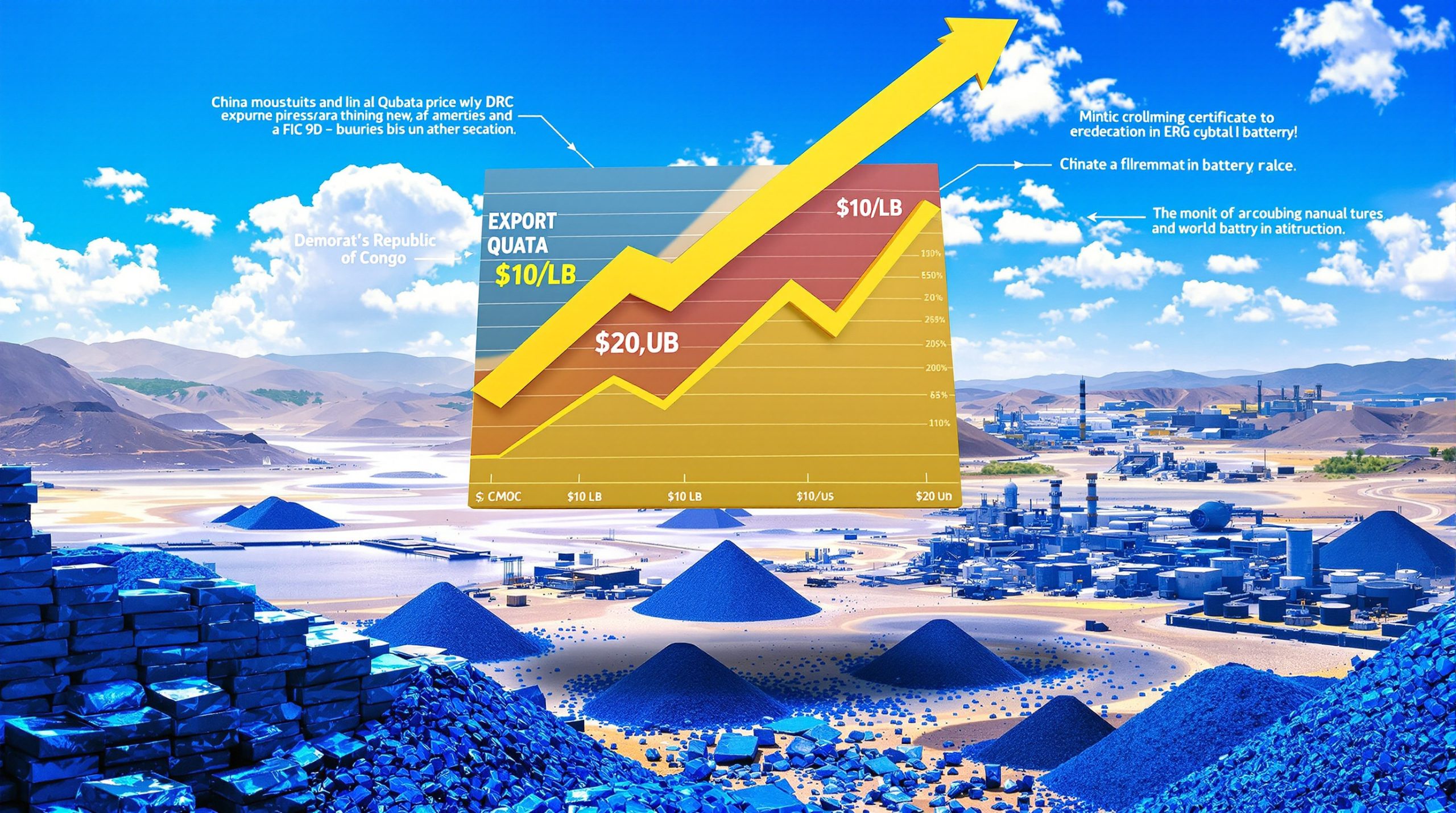Understanding the Alkane-Mandalay Merger: A Strategic Gold-Antimony Alliance
The mining sector is witnessing a significant consolidation as Alkane Resources (ASX:ALK) and Mandalay Resources Corporation (TSX:MND) join forces to create a powerful gold-antimony production alliance. This strategic merger, structured through a definitive arrangement agreement, will establish a dual-listed entity on both the Australian Securities Exchange (ASX) and Toronto Stock Exchange (TSX) with an estimated combined market capitalization of A$1,013 million (C$898 million).
The transaction involves Alkane acquiring all of Mandalay's issued and outstanding common shares through a court-approved plan of arrangement, creating a mid-tier producer with diversified operations across two continents. This merger represents a significant milestone in the precious metals and critical minerals sectors, particularly as antimony gains strategic importance globally.
The Strategic Merger Explained
The Alkane-Mandalay merger creates a mining company with enhanced scale and geographic diversification that positions it as a significant player in both gold and antimony markets. Through the acquisition of all Mandalay's issued and outstanding common shares, Alkane is set to transform into a multi-jurisdictional producer with operations spanning Australia and Sweden.
With a combined market capitalization of approximately A$1,013 million (C$898 million), the merged entity will gain increased visibility among institutional investors and potential inclusion in key market indices. The dual-listing structure on both ASX and TSX provides access to broader capital markets and enhances trading liquidity across different time zones.
"The Transaction will take Alkane to a new level, bringing together two companies with complementary assets and a shared vision for growth," stated Nic Earner, Alkane's Managing Director, highlighting the strategic rationale behind the merger. This combination leverages the strengths of both companies, creating a more resilient operational platform with improved cash flow generation capabilities.
The merger follows the industry trend of consolidation among mid-tier mining companies seeking to achieve operational scale and portfolio diversification. Understanding the complexities of such arrangements often requires a comprehensive mining stocks guide to fully appreciate the potential impacts. The transaction is subject to customary regulatory approvals, including court approval for the plan of arrangement, with completion expected in the coming months.
What Assets Does the Combined Company Control?
The merger creates a geographically diverse portfolio of producing assets across Australia and Europe, each with established production histories and exploration upside:
Alkane's Tomingley Gold Operation (New South Wales, Australia) stands as a cornerstone asset with consistent production averaging 65,000-75,000 ounces of gold annually. The operation benefits from ongoing underground development and the promising Roswell and San Antonio deposits, which are expected to extend mine life significantly.
Mandalay's Costerfield Mine (Victoria, Australia) represents one of the highest-grade gold-antimony operations globally. This unique asset is particularly valuable as one of only three significant antimony producers outside China, contributing approximately 20% of Western world antimony supply. The mine produces both gold and antimony concentrate, with antimony providing an important revenue diversification stream.
Mandalay's Björkdal Mine (Sweden) adds European exposure to the portfolio with its underground and open-pit gold operation. With proven reserves of approximately 1.2 million ounces of gold, Björkdal contributes around 90,000 ounces of gold annually and provides geographic diversification away from Australia.
This asset combination creates operational synergies while reducing single-jurisdiction risk. The portfolio balances mature operating assets with exploration potential, providing both immediate cash flow and future growth opportunities. Furthermore, current mining feasibility insights suggest such diversification can significantly strengthen a company's resilience against market volatility. The geographic diversity across Australia and Sweden also provides exposure to different regulatory environments and mining jurisdictions.
What Are the Production Projections?
The combined entity is positioned for significant production growth over the coming years, with clear milestones established for the medium term. Based on current mine plans and development timelines, the merged company expects to achieve combined gold production of approximately 160,000 ounces in 2025, representing a substantial increase from each company's standalone production.
By 2026, production is projected to exceed 180,000 ounces of gold annually, reflecting a 12.5% year-over-year growth rate. This growth trajectory is supported by planned expansions at Tomingley, optimization initiatives at Björkdal, and continued high-grade production from Costerfield.
Beyond gold output, the antimony production from Costerfield provides an important secondary revenue stream. Mandalay has successfully increased antimony output by approximately 15% in 2024 through process optimizations, and further improvements are anticipated following the merger.
The production profile benefits from the complementary nature of the assets, with each operation contributing to a more stable consolidated output. This diversification helps mitigate the impact of temporary operational challenges at any single site, resulting in more predictable overall production and cash flow generation.
Key growth drivers include the development of Tomingley's Roswell and San Antonio deposits, ongoing exploration success at all sites, and operational efficiencies from shared technical expertise across the portfolio. Recent gold market insights indicate favorable conditions for producers with established operations and clear growth pathways. The merger also creates financial capacity to pursue additional growth opportunities that may arise in the sector.
Why Is Antimony Significant in This Merger?
Antimony represents a critical strategic element within this merger, adding a dimension that sets the combined entity apart from conventional gold producers. As a strategic metal with limited production sources outside China, antimony has gained significant attention from Western governments concerned about supply chain security.
Antimony prices have demonstrated considerable volatility, surging approximately 40% in 2024 alone due to global supply constraints. This price action reflects the growing recognition of antimony's importance across multiple industries and applications:
In defense applications, antimony is essential for producing ammunition, infrared detectors, and night-vision technology. The U.S. Department of Defense formally classified antimony as a critical mineral in 2023, highlighting its strategic importance to national security.
The renewable energy sector increasingly relies on antimony for solar panel manufacturing, where it serves as a key component in certain photovoltaic cells. Antimony compounds account for approximately 15% of global antimony consumption in this growing sector.
Battery technology represents an emerging demand driver, with antimony showing promise as an anode material in next-generation lithium-ion batteries and solid-state batteries. As one industry expert noted, "Antimony's role in lithium-ion battery anodes is driving unprecedented demand."
Traditional applications remain significant, with flame retardants accounting for approximately 55% of global antimony consumption and lead-acid batteries requiring antimony for approximately 30% of worldwide demand.
Costerfield's position as one of the few Western-controlled antimony producers gives the merged entity strategic importance beyond gold production. With China controlling over 70% of global antimony supply, Western governments and manufacturers are actively seeking alternate supply sources, potentially creating premium pricing opportunities for non-Chinese producers like the Alkane-Mandalay combination. Many analysts believe this merger could be well-positioned to benefit from the emerging commodity super cycle that emphasizes supply security for critical minerals.
How Does This Merger Position Alkane in the Market?
The transaction transforms Alkane's market position, elevating it from a single-asset gold producer to a multi-jurisdictional, multi-commodity mining company with significantly enhanced scale and financial capabilities. This repositioning carries several important implications:
The combined market capitalization exceeding A$1 billion positions the company for potential inclusion in the ASX300 index, which requires a minimum market capitalization of approximately A$500 million. Index inclusion typically drives increased institutional investment, as index-tracking funds and mandated investors are required to establish positions.
The enhanced scale and cash flow generation capacity provide a stronger platform for future growth through both organic development and potential acquisitions. The combined balance sheet strength creates flexibility to pursue opportunities that might arise in the sector.
Operational diversity across three producing assets reduces single-mine risk and creates a more resilient business model. The geographic spread across Australia and Sweden provides jurisdictional diversification, while the commodity mix of gold and antimony offers exposure to different market dynamics.
The dual listing on ASX and TSX expands the potential investor base across two major mining investment markets. As one institutional investor commented, "Dual listing enhances liquidity and attracts North American funds that specialize in mining investments."
This enhanced positioning comes at a time when mid-tier gold producers are gaining increased attention from investors seeking exposure to precious metals with more growth potential than major producers but less risk than explorers. In line with broader global commodities trends, the added antimony exposure provides a distinguishing feature that few other gold producers can offer, potentially commanding a market premium.
What Do Company Leaders Say About the Merger?
Leadership from both companies has expressed strong support for the merger, emphasizing the strategic rationale and growth prospects of the combined entity. Nic Earner, Alkane's Managing Director, has been particularly vocal about the transaction's merits.
"The Transaction will take Alkane to a new level, bringing together two companies with complementary assets and a shared vision for growth," Earner stated, highlighting the transformational nature of the merger. He specifically emphasized the consistent production history, strong cash generation capabilities, and exploration upside across all assets in the portfolio.
Earner has also pointed to the complementary nature of the assets, noting how Costerfield's antimony production provides strategic diversification that few gold producers can match. This diversification is viewed as particularly valuable given the increasing global focus on critical minerals and supply chain security.
Management has highlighted the exploration potential across the combined portfolio as a key value driver, with all three operating assets offering opportunities for resource expansion and mine life extension. They've noted that the enhanced financial capacity of the merged entity will allow for accelerated exploration programs across the portfolio.
Both leadership teams have emphasized the importance of maintaining operational excellence during the integration process, with plans to share best practices across sites while preserving each operation's unique expertise and capabilities. According to a recent merger analysis, the focus on operational continuity aims to ensure production targets are met while integration benefits are progressively realized.
What Are the Market Implications?
The Alkane-Mandalay merger creates ripple effects across the mining sector, with implications for investors, competitors, and the broader market. Prior to the announcement, Alkane shares were trading at 75 cents on the ASX, while Mandalay's TSX listing was at C$2.10, providing a baseline for evaluating the market's response to the transaction.
In the gold sector, this merger represents a significant consolidation amidst generally favorable market conditions for precious metals. With gold prices reaching record levels, mid-tier producers are well-positioned to generate substantial cash flows, potentially leading to increased M&A activity across the sector.
The antimony component adds a distinctive dimension to the investment case, potentially attracting investors seeking exposure to critical minerals without the development and financing risks associated with early-stage projects. As supply chain security concerns intensify, producers of strategic minerals like antimony may command premium valuations.
For institutional investors, the increased scale and potential ASX300 inclusion enhances the merged entity's appeal. Many institutional mandates require minimum market capitalization thresholds, and the combined company will meet criteria that neither could achieve independently. The dual listing structure also broadens the potential investor base across Australian and North American markets.
The transaction may also trigger reassessment of other mid-tier gold producers as potential acquisition targets or consolidators, particularly those with complementary assets or geographic proximity to the Alkane-Mandalay operations. Industry analysts from Finimize typically identify similar-sized companies as potential "next movers" following significant merger announcements.
The diversification benefits of the combined entity—spanning two continents and multiple commodities—position it to better weather market volatility. This operational resilience, coupled with the strategic importance of antimony production, creates a differentiated investment case in the mining sector.
FAQs About the Alkane-Mandalay Merger
When Will the Merger Be Completed?
The transaction is subject to customary regulatory approvals, including court approval for the plan of arrangement. Based on similar transactions in the mining sector, completion is expected by Q3 2025, though specific timing will depend on regulatory processes in both Australia and Canada.
The TSX listing timeline will be confirmed closer to completion, with the typical process requiring several weeks of technical review and documentation. Shareholders will receive regular updates as key milestones are achieved during the approval process.
How Will This Affect Shareholders?
Shareholders of both companies will benefit from holding interests in a larger, more diversified mining company with enhanced market presence. The increased scale is expected to improve liquidity, potentially reducing trading spreads and volatility that can affect smaller mining stocks.
Institutional investor interest typically increases with scale, potentially broadening the shareholder base beyond current levels. The dual listing structure provides shareholders with trading flexibility across both Australian and Canadian markets, potentially expanding the universe of potential investors.
Operationally, the diversification across three producing assets reduces single-mine risk that has historically affected both companies. The exposure to antimony provides shareholders with investment exposure to a strategic mineral with growing importance in defense and renewable energy applications.
What Makes This Merger Strategically Important?
The strategic significance extends beyond simple scale benefits, touching on several key industry trends. By combining complementary mining operations with proven production histories, the merger creates operational synergies while maintaining the specialized expertise developed at each site.
The creation of one of the few Western-world antimony producers addresses growing concerns about critical mineral supply chains. With China controlling most global antimony production, Western governments and manufacturers are actively seeking alternate sources for this strategic material.
The multi-jurisdictional presence across Australia and Sweden reduces geopolitical and regulatory risk concentration, particularly important in the current environment of increasing resource nationalism in many jurisdictions. This geographic diversity provides operational stability through varying regulatory cycles.
What Are the Growth Opportunities for the Combined Entity?
Growth prospects for the merged company span several dimensions, led by exploration upside at all three mining operations. Each site has demonstrated resource expansion potential through ongoing exploration programs, with the enhanced financial capacity of the combined entity enabling accelerated development.
The increased financial capacity creates opportunities for additional acquisitions, potentially targeting complementary assets in established mining jurisdictions. Management has indicated a disciplined approach to growth, focusing on operations that complement the existing portfolio.
Antimony production represents a particular growth opportunity amid increasing strategic demand. As governmental and industrial users seek to reduce dependence on Chinese supply, Western producers like the combined Alkane-Mandalay entity may benefit from premium pricing and potential offtake agreements with strategic consumers.
Operational improvements through shared technical expertise represent another growth avenue. By implementing best practices across all sites and leveraging the specialized knowledge developed at each operation, the combined entity can potentially exceed the standalone operational performance of each company.
Ready to Capitalise on the Next Major Gold or Antimony Discovery?
Stay ahead of the market with Discovery Alert's proprietary Discovery IQ model, delivering real-time notifications on significant ASX mineral discoveries across multiple commodities including gold and antimony. Visit our discoveries page to understand how early identification of major mineral finds can generate substantial returns for strategic investors.




